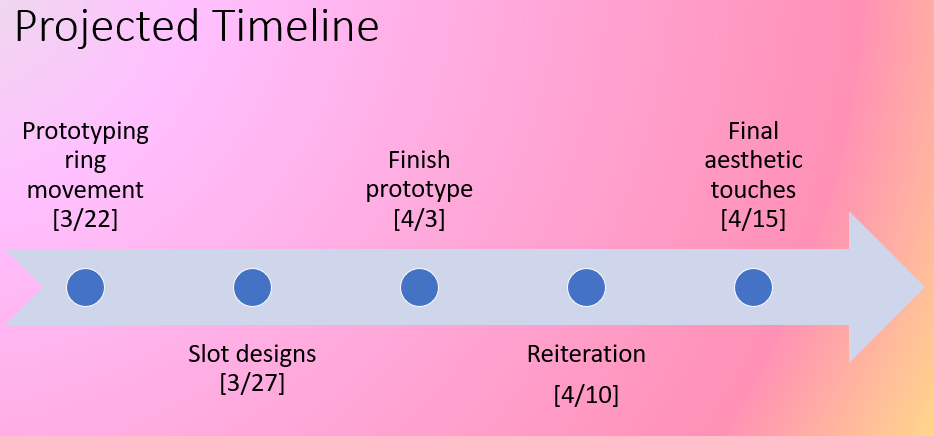
Above is the original timeline for my main project. Given the new set of circumstances thanks to COVID-19, I will make just one change to my plans, and that is replacing the “Reiteration” with a 3D rendering of the toy within SolidWorks. Because we have lost (easy) access to the laser cutters, and with the limited amount of resources now available to the wider campus, I’ve decided I will only be making one physical iteration of this toy. Luckily, I was able to rush my production a bit in order to cut out my rings and laser roster a zoetrope before the closing of the ITLL.
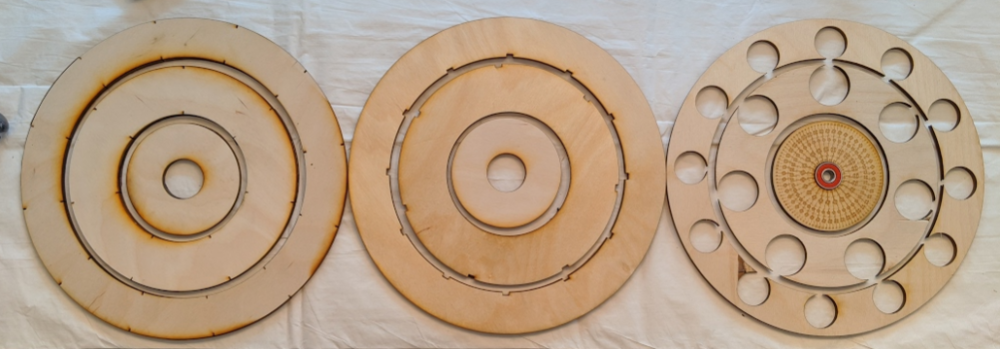
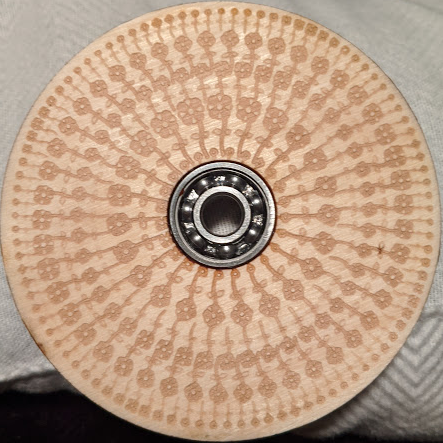
Design credit: Makezine, “Petal Dance” https://makezine.com/projects/animated-records-phenakistoscopes/
As with my Kirby upcycle project, performing the laser cuts for the rings was fairly straightforward. The manufacturing process begins with the CAD model generation, in this case, a simple 2D sketch, which is then used to generate .dxf files to pass to Coreldraw software for the laser cutters.
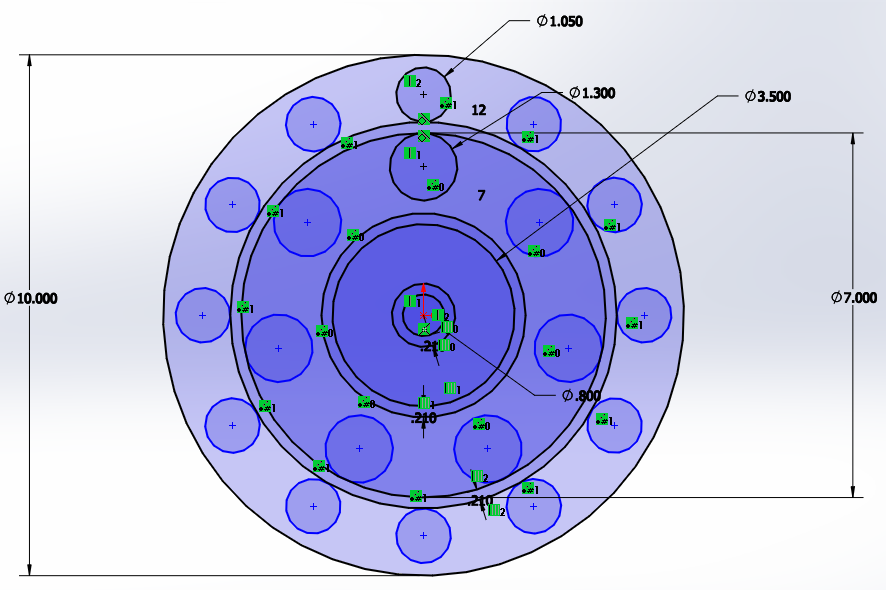
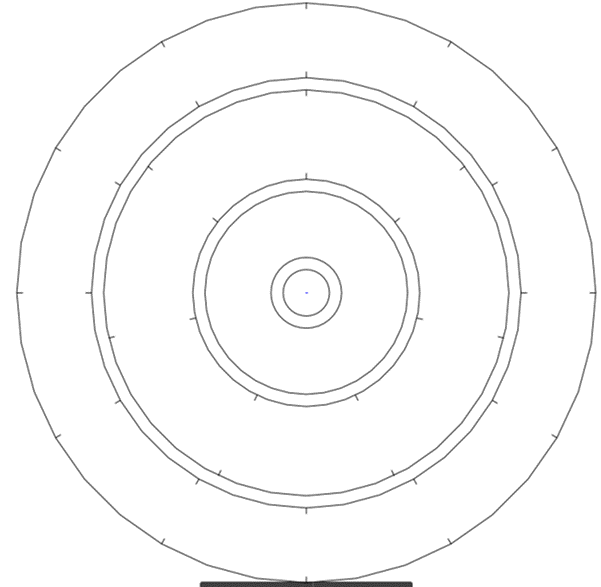
To prevent slight misalignment of the zoetrope design with the inner ring, I first performed the rostering of the design. Below is the original image used for the design, as well as the Photoshopped version I generated to help the Coreldraw software “see” the finer details when performing the trace.


Original photo credit: https://makezine.com/projects/animated-records-phenakistoscopes/
As you can see in the earlier pictures, I designed the rings to be in three layers, so I can recess magnets in the middle layer. I simply wood-glued the layers together, then scraped the excess glue and sanded to have the final first iteration of the rings component to this toy.
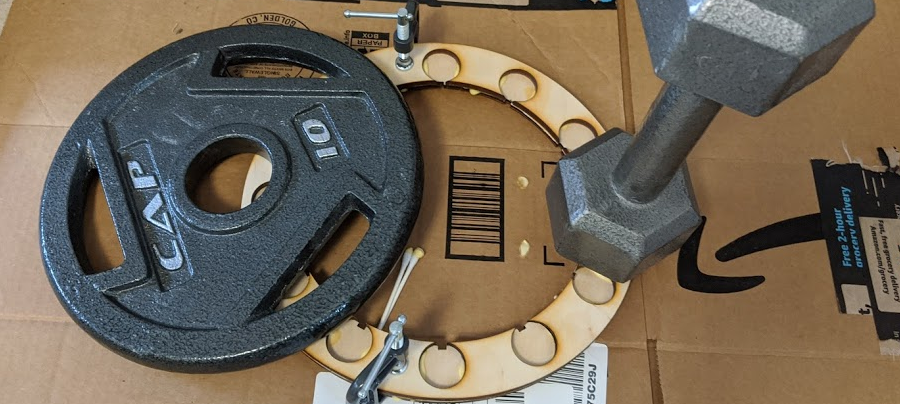
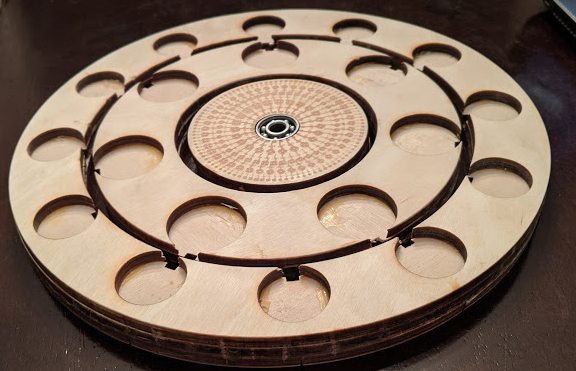
Now for the mechanics of this toy, I have decided to pivot to a lazy susan style bearing on recommendation by Professor Hertzberg. This will save me a lot of labor figuring out different gearing ratios and/or getting shafts and bearings to come together in a cohesive way. Additionally, with this method, the only tools I’ll need are a drill and screws, potentially even just a screwdriver and screws if I really want to avoid spending money on a power tool. I have several different diameter lazy susan bearings on order, to mount to each of the rings.
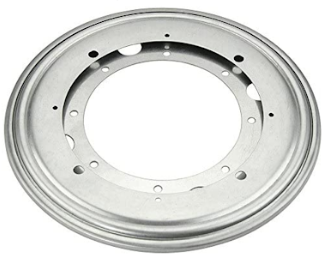
photo credit: https://www.amazon.com/Woodworkers-Supply-Inc-Furniture-Galvanized/dp/B00E3H6KYG
The last piece to consider for the overall functionality of the toy is how to “lock” the rings into their places. Since each ring is going to be mounted with bearings independently, there is nothing currently keeping them in place relative to each other. For this, I will likely go with an online 3D printing service if it isn’t too costly, or, I will mount each of the bearings to a common backboard, although alignment may be a bit tricky.
Finally, aesthetically, I will be drawing each button design within Photoshop, or editing photos should I somehow end up in a time crunch. However, with my current plan of a button a day, I should be able to complete the designs with plenty of time to spare. I can then print these designs, manufacture the buttons with the help of a friend who has a press, and then mount them to their respective slots using a super glue to keep them firmly in place. Ideally this would’ve been a press fit, but because of my limited time, I was only able to generate slots which were slightly too loose for that to be possible. Likewise for the magnets, they will be super glued into their respective recesses for the magnetic detent function. I will finish off the rings with a coat of paint to match the Kawaii aesthetic, and a protective polyurethane coating to ensure it lasts and doesn’t pick up too much grime or dust over time.
With how far I’ve gotten up to this point, I can already see plenty of changes I’d implement if I had the ability to make second and third iterations. I will include those within my 3D rendering I plan to make, which will be an assembly so the user could even simulate the toy’s movement, albeit in a very crude manner. Best of luck to everyone having to likewise pivot their manufacturing methods!
Link to video of live presentation: https://photos.app.goo.gl/LNJiiKVxh9x4tNQF6

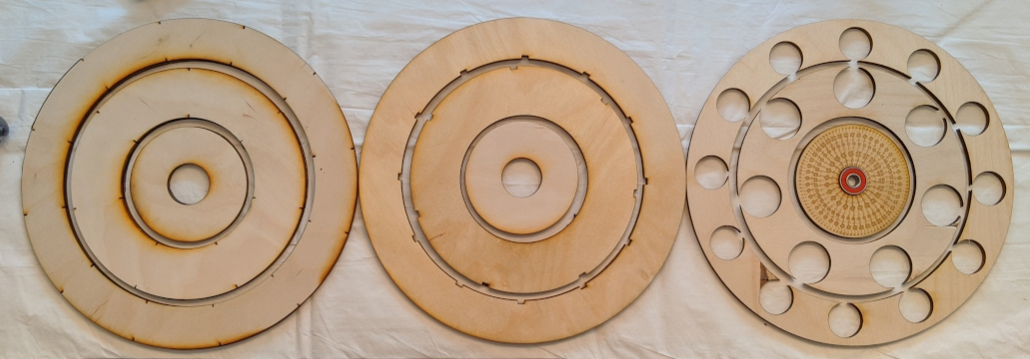
4 Comments. Leave new
[…] For a glimpse at how far along the physical manufacturing route I went, please visit my blog here. […]
[…] The toy’s movement is built on Lazy Susan style bearings attached to each of the rings (disc in the case of the innermost) which enable independent, rotational movement of each. The ring and bearing combinations are kept in place via the mounting plate, which also has brackets which indicate the combination selected by the user. Additionally, there are magnets mounted around the inside perimeter of the outer ring, and the outside perimeter of the middle ring. This is achieved by having the rings composed of 3 1/8” layers, with the middle layer having slots for the magnets. The magnets act as detents to ensure the buttons snap into vertically-centered alignment. The final size of the artifact is ~10” diameter and ¾” height. To see how I would/will approach the physical manufacturing, please visit my blog here. […]
Hi Thomas! I am very impressed with how you pivoted with your project and how much progress you have made. Looking at the images in your post, I do not really get a sense of how big your mood ring is. For future photos (especially for the final presentation/post) I recommend putting it in context/placing it on a desk with other items so people can tell how big it is. My question for you is what will the buttons be made from?
Thanks, I’m pretty happy with where I’m at for now as well! Getting the mechanics of this toy to work well will be a bit more of a problem than I was anticipating, so I don’t feel too far ahead of schedule. The bearings I have now currently clash with each other so I’ll need to get a bit creative with their mounting and placement.
I’ll be sure to include something for reference in my finished product photo, but if you wanted a rough idea, the CAD drawing I included above has units of inches.
The buttons are composed of just a simple printing paper sandwiched between the metal backing and mylar cover, like nearly all pin-backs you’ve maybe seen on people’s jackets, backpacks, hats, etc.